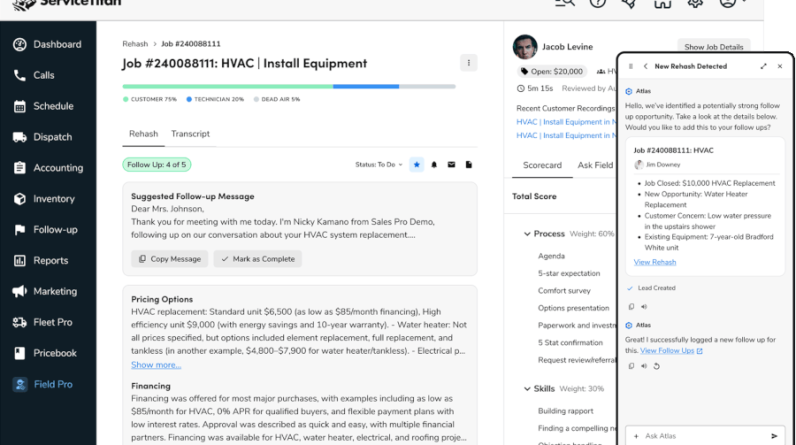1
By Nicholas Larsen, International Banker
It is fair to say that few technological breakthroughs over the last 18 months or so, if any, have managed to capture the world’s imagination as much as generative artificial intelligence (GenAI). The late-2022 launch of ChatGPT, in particular, ushered in a new era for AI, with applications today widely utilising the technology to deliver superior results across a diverse array of business use cases. The banking industry has proven no exception, with GenAI viewed increasingly as a potent weapon for financial institutions to improve their customer-facing performance, boost operational efficiency and positively impact their bottom lines, among a myriad of benefits.
Indeed, the power to harness substantial volumes of data of many types, including text, image, video, and code, to produce the desired results and/or glean potentially critical insights from said data means banks can develop models for a broad variety of functionalities that go above and beyond what was previously possible. Whether it be an AI-powered virtual assistant (VA) addressing and resolving customer queries with high accuracy, a deeply personalised slate of products and services being offered to each customer or a cutting-edge fraud-detection system that can sift through reams of financial transaction data at breakneck speed, GenAI has the potential to critically modernise and even completely upend existing business models that have prevailed within the banking industry for years, if not decades.
“While banks have rightly focused on productivity in their initial gen AI pilots due to the broader pressure on banking economics, the technology could greatly alter how some jobs are done and how customers interact with banks,” McKinsey & Company wrote in a December 2023 piece. “It might even lead to entirely new business models.”
To date, the wave of AI automation within the banking industry has mainly been focused on “operational simplification and cost reduction”, according to Miriam Fernández, director of analytical innovation at S&P Global Ratings, with banks “identifying manual and mechanical tasks performed by staff and replacing them with computers that are not only cost effective but also less prone to operational failures”. In an October 2023 report, Fernández cited Standard Chartered’s document-processing system, Trade AI Engine, as an example of AI being used in banking to drive automation. Developed with IBM, the tool “can review unstructured data in different formats, identify and classify documents, and learn from its own performance”.
Morgan Stanley is another of the technology’s distinct early banking-industry adopters, as well as one of its most enthusiastic proponents. “Financial advisors will always be the center of Morgan Stanley wealth management’s universe,” Morgan Stanley’s co-president, Andy Saperstein, noted in September 2023, when the bank went live with its GenAI solution, AI @ Morgan Stanley Assistant, which it had designed using the latest software from OpenAI, the company behind ChatGPT. “We also believe that generative AI will revolutionise client interactions, bring new efficiencies to advisor practices, and ultimately help free up time to do what you do best: serve your clients.”
The tool gives the institution’s financial advisors and support teams hugely convenient access to the bank’s “intellectual capital” of more than 100,000 research reports and documents. As such, it saves time for advisors and customer-service employees when they are addressing questions about markets, recommendations and internal processes, freeing them up for more engagement with their clients, according to Jeff McMillan, head of analytics, data and innovation at Morgan Stanley Wealth Management, who spoke to CNBC at the time of the launch.
The bank reportedly spent several months developing the tool, curating large volumes of documents and using several human experts to test the assistant’s responses. The crucial game-changer was ChatGPT’s use of large language models (LLMs) to create human-sounding responses to questions. “The traditional way in which you would solve those things is you would write code. In the new world, you give examples of what ‘good’ looks like, and the system learns what good is. It’s actually able to ‘reason’ and apply logic that a human would apply,” according to McMillan. “I’ve never seen anything like this in my career, and I’ve been doing artificial intelligence for 20 years. We saw a window of opportunity that was just completely disruptive, and I think as an organization, we didn’t want to get left behind.”
Morgan Stanley has also promised to introduce more AI tools in the not-too-distant future, including an AI pilot programme called Debrief, which automatically summarises the content of client meetings and generates follow-up emails. And with cost and efficiency gains from such GenAI-based applications expected to be substantial over the coming years, it is not surprising that banking behemoths, including JPMorgan Chase, Citigroup and Goldman Sachs, are not far behind Morgan Stanley in developing their own custom AI models.
Indeed, much of the evidence suggests that global banking leaders are positively ebullient over what this new era of AI can achieve for the industry. The McKinsey Banking & Securities Gen AI Forum, held in September 2023, for instance, found that two-thirds of senior digital and analytics leaders in attendance said they believed the technology would fundamentally change the way they do business.
It is also expected that LLMs will be increasingly designed to cater more exclusively to certain industries—banking included. Launched back in May 2023, for instance, KAI-GPT was designed by US company Kasisto as a conversational AI platform specifically for use by the financial-services industry. First Financial Bank, among the oldest banks in the United States, was one of the first adopters of KAI-GPT through its AI-powered digital assistant, Gabby, which provides customers with frictionless experiences between digital and employee-assisted channels.
Gabby’s success since its launch in mid-2023 has been inarguable. With First Financial closely monitoring the performance of its assistant across a variety of business criteria, the bank recorded an increase in the number of new deposit and loan accounts opened, including a 27-percent rise in newly opened certificate of deposit (CD) accounts, as well as increases in mortgages, personal loans and vehicle loans by 35 percent, 28 percent and 5 percent, respectively. What’s more, 90 percent of the questions presented to Gabby were “contained” so that customers did not have to contact First Financial employees for further assistance. And customers of all generations were comfortable conversing with Gabby, with a similar percentage of the Silent Generation (ages 78-98) being observed using Gabby as that of Millennials (ages 29-43).
“Integrating Gabby into our First Financial team has been crucial to elevating the client experience,” Brad Waldhoff, chief information officer at First Financial Bank, said in February. “The positive response from our customers and team members alike has been encouraging and has allowed us to deepen our relationships by providing more information that can help our customers achieve financial wellness. The success we’ve experienced at this stage is a testament to the work the Kasisto team has provided, levelling-up our banking experience through their future-facing technology.”
Clearly, such positive feedback bodes well for GenAI’s potential to truly revolutionise banking. That said, given the still-tepid uptake of GenAI by lenders at present, the revolution may not exactly be imminent. Despite AI-powered automation having become commonplace among bigger lenders’ digital-transformation journeys in recent years, the degree of investment in and the adoption of more recent GenAI technology for banking use cases remain somewhat sluggish. “The possibilities (and risks) are thus yet to be fully tested,” S&P’s Fernández acknowledged. “But the potential for the new AI to reshape banking seems vast.”
Indeed, that “vast” potential means that AI’s future within the banking sector could scarcely be more promising. According to research from Polaris Market Research published in February, the market size of AI in banking was valued at $19.84 billion in 2023 and is estimated to grow from $26.10 billion in 2024 to a whopping $236.70 billion by 2032 at a compound annual growth rate (CAGR) of 31.7 percent during the forecast period. The study observed key underlying factors for banks’ growing investments in AI solutions, including the transformation of the management process of the fintech (financial technology) sector and the delivery of superior services to users. And as the banking industry becomes more complex and competitive, the report also noted, AI tools will be crucial for meeting the growing demand for specialised solutions.
AI also plays an important role “in assisting financial institutions throughout the risk management process, including risk identification, measurement, estimation, and impact assessment,” Polaris stated, adding that major financial institutions are investing heavily in AI technology “to develop automated investment advisors and train systems for detecting activities like money laundering”. This proactive financial monitoring will help to prevent “illegal techniques”, according to the research.
McKinsey & Company, meanwhile, estimated that across the banking industry, GenAI could deliver value equal to an additional $200 billion to $340 billion annually—equivalent to 9 to 15 percent of operating profits—largely as a result of the productivity gains that the technology is expected to deliver. “The economic impact will likely benefit all banking segments and functions, with the greatest absolute gains in the corporate and retail sectors ($56 billion and $54 billion, respectively),” the consulting firm also predicted.






